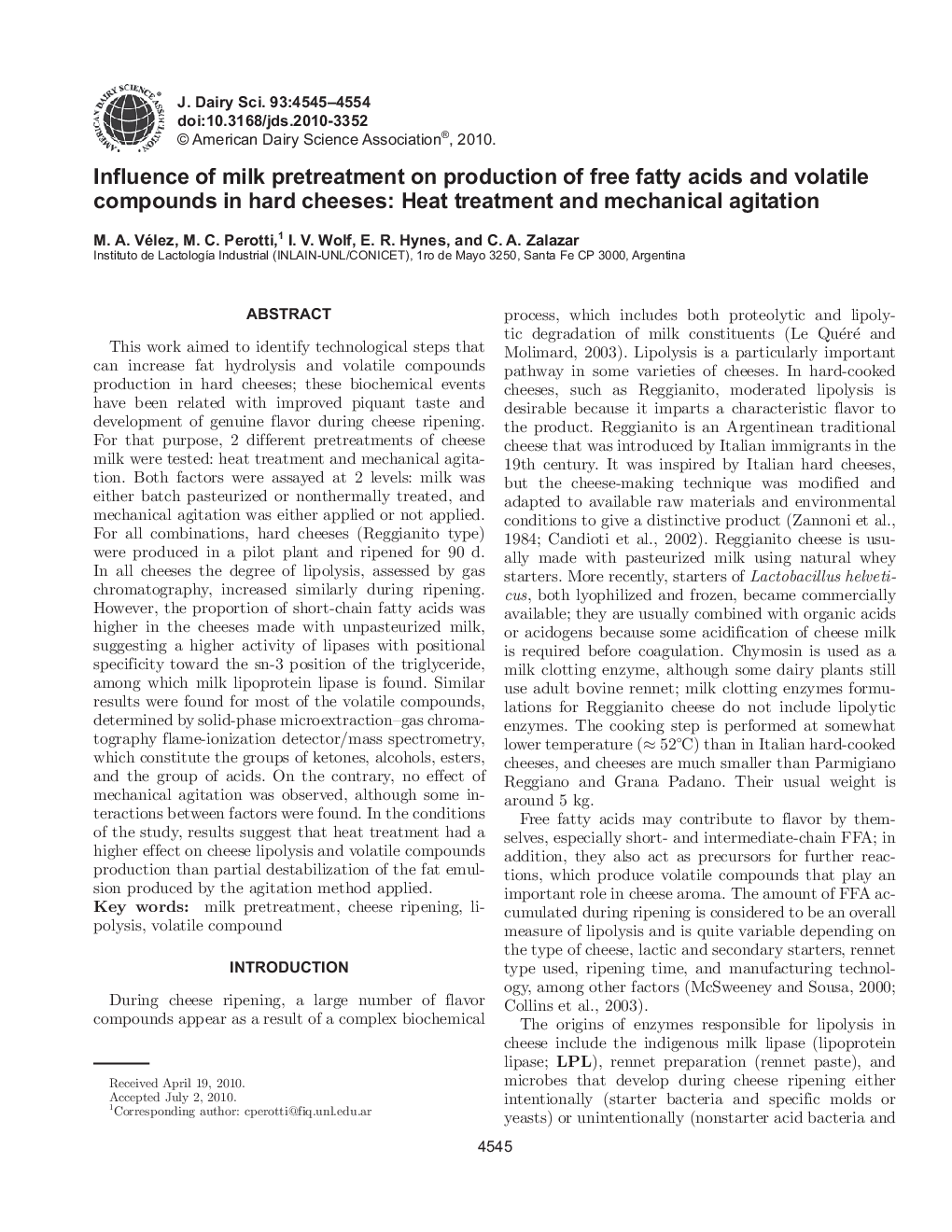| Article ID | Journal | Published Year | Pages | File Type |
|---|---|---|---|---|
| 5789863 | Journal of Dairy Science | 2010 | 10 Pages |
This work aimed to identify technological steps that can increase fat hydrolysis and volatile compounds production in hard cheeses; these biochemical events have been related with improved piquant taste and development of genuine flavor during cheese ripening. For that purpose, 2 different pretreatments of cheese milk were tested: heat treatment and mechanical agitation. Both factors were assayed at 2 levels: milk was either batch pasteurized or nonthermally treated, and mechanical agitation was either applied or not applied. For all combinations, hard cheeses (Reggianito type) were produced in a pilot plant and ripened for 90 d. In all cheeses the degree of lipolysis, assessed by gas chromatography, increased similarly during ripening. However, the proportion of short-chain fatty acids was higher in the cheeses made with unpasteurized milk, suggesting a higher activity of lipases with positional specificity toward the sn-3 position of the triglyceride, among which milk lipoprotein lipase is found. Similar results were found for most of the volatile compounds, determined by solid-phase microextraction-gas chromatography flame-ionization detector/mass spectrometry, which constitute the groups of ketones, alcohols, esters, and the group of acids. On the contrary, no effect of mechanical agitation was observed, although some interactions between factors were found. In the conditions of the study, results suggest that heat treatment had a higher effect on cheese lipolysis and volatile compounds production than partial destabilization of the fat emulsion produced by the agitation method applied.
